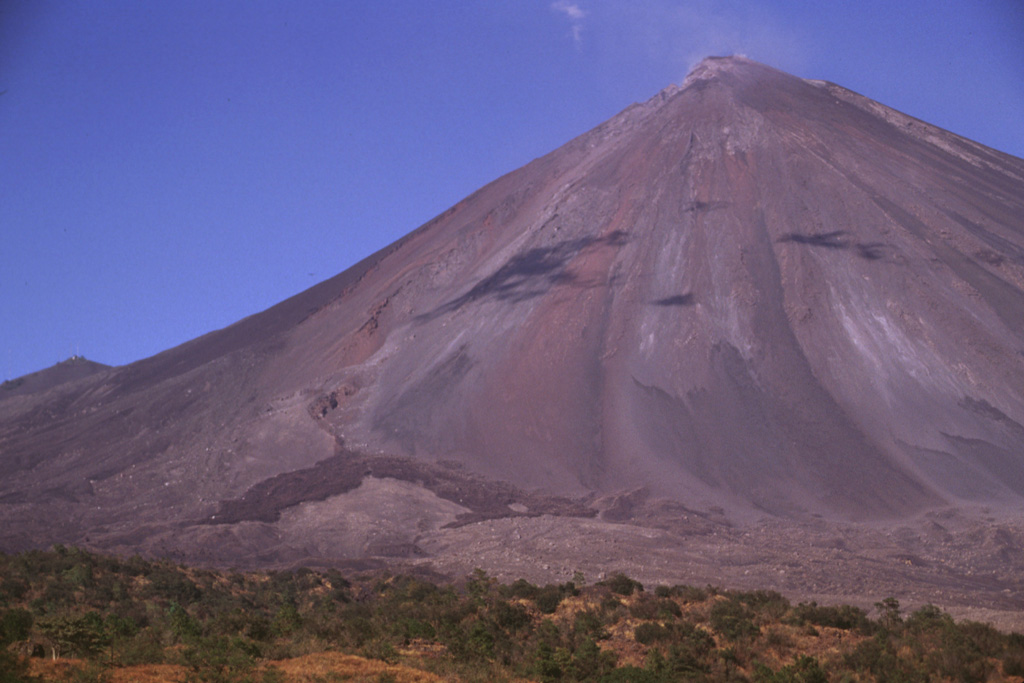Image GVP-08410

Frequent eruptions from MacKenney crater at Pacaya have kept the flanks free of vegetation. The summit towers more than 1 km above its base. The darker area to the lower left in this February 1999 photo is a September 1998 lava flow that originated from a vent on the lower SW flank that bifurcated into lobes that traveled to the SW and S. The lighter area below the flow extending to the right margin of the photo is a debris avalanche deposit that formed when the summit crater rim collapsed.
Photo by Lee Siebert, 1999 (Smithsonian Institution).
![]() This image is made available under the Public Domain Dedication CC0 license, but proper attribution is appreciated.
This image is made available under the Public Domain Dedication CC0 license, but proper attribution is appreciated.
Keywords: stratovolcano | lava lobe

Pacaya
